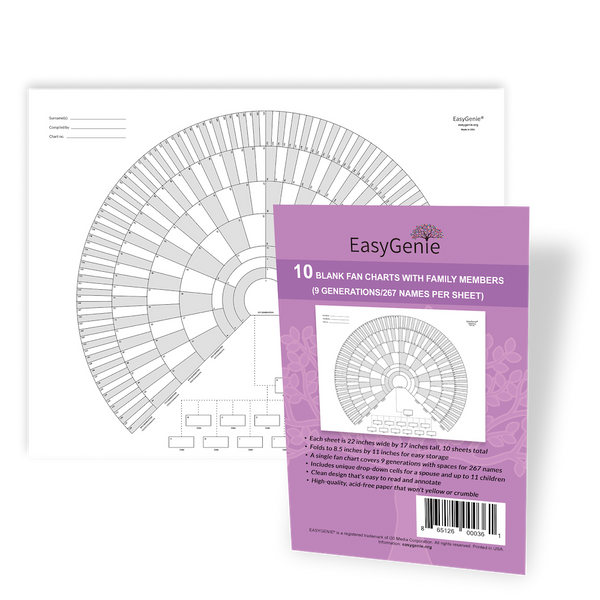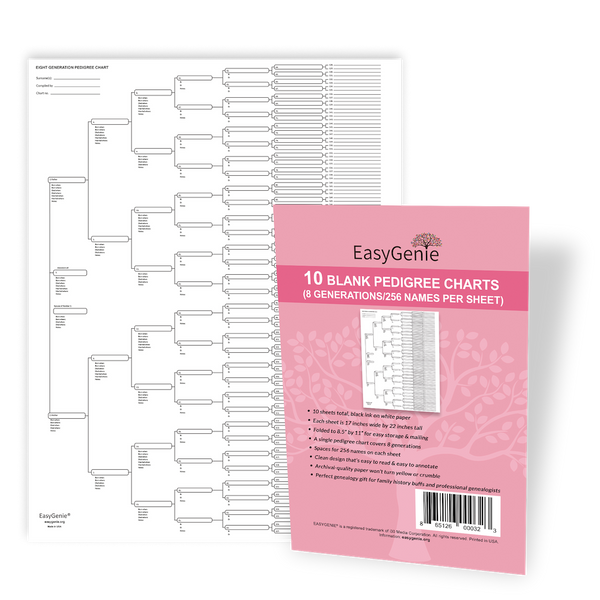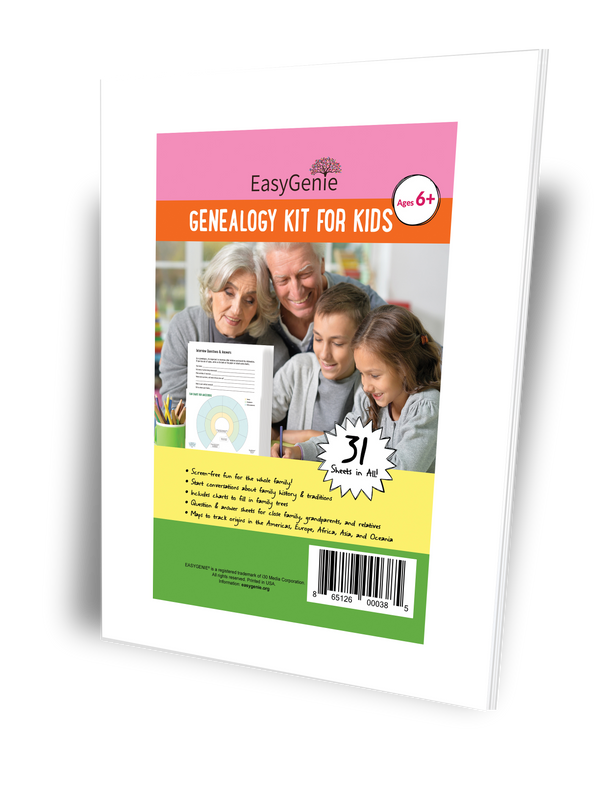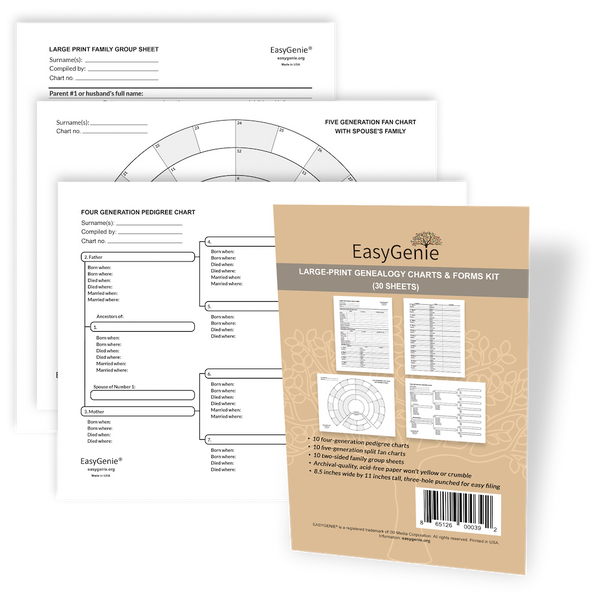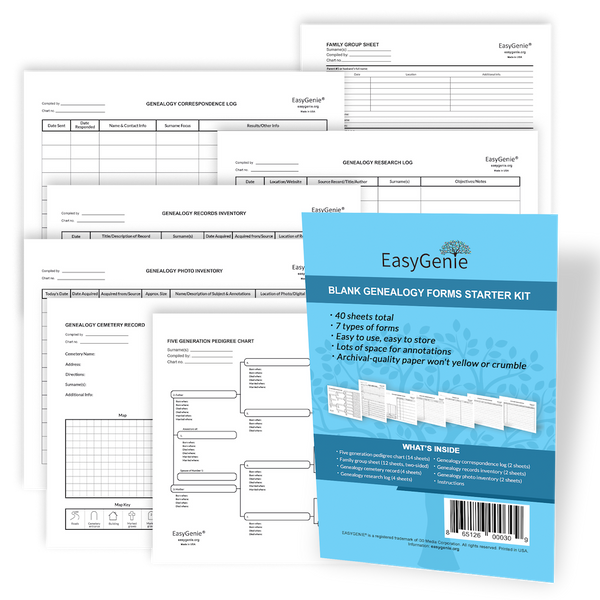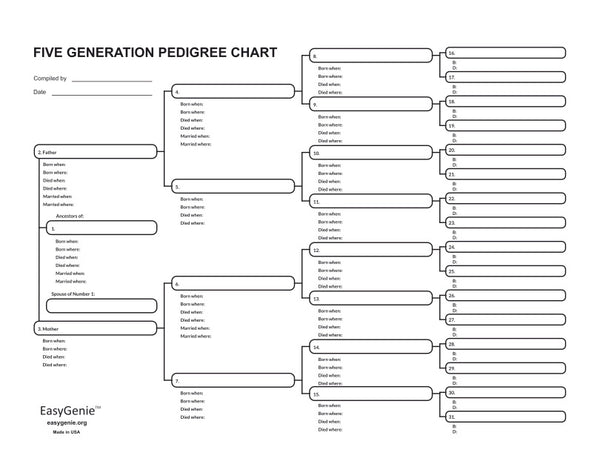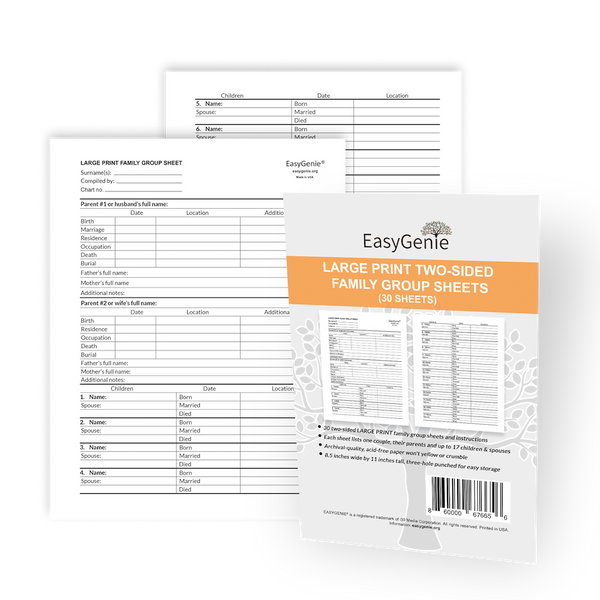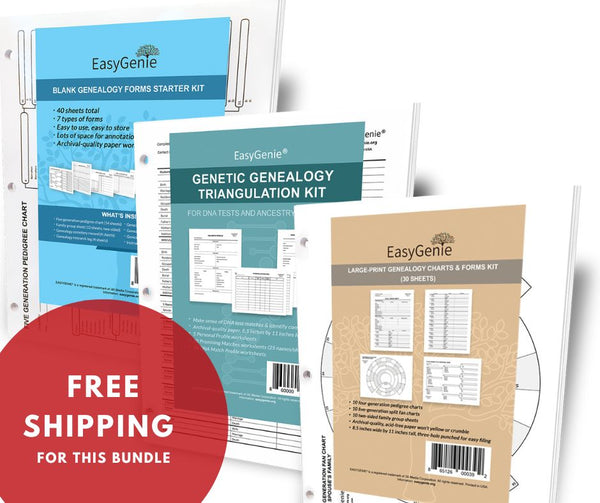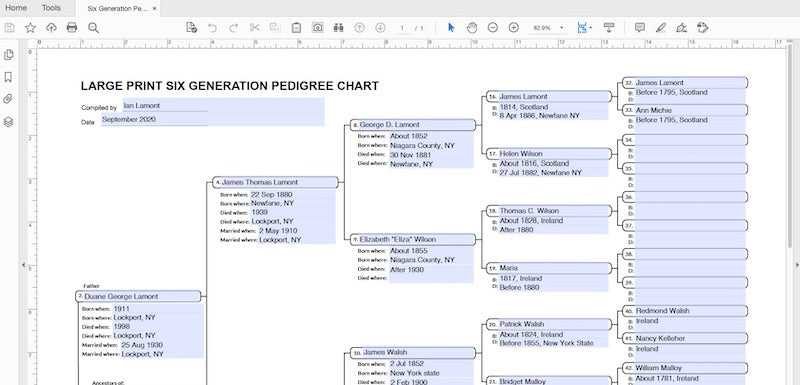
Why we don't trust Adobe Cloud to store genealogy PDFs
Ian LamontWe received a message from a customer who purchased one of our fillable PDFs about how the PDFs should be saved. It's a great question that touches upon a crucially important issue for any genealogist or family historian: how to preserve digital data for the next generation.
The question related to using the free Adobe Acrobat Reader software program, which is our recommended tool for opening and typing into EasyGenie fillable PDFs on Windows PCs or Macs. The one shown above is the top section of our Large Print 6-generation Fillable PDF.
However, Adobe tries to trick users into using its "Adobe Cloud" for saving the documents. A "cloud" is basically a bunch of computer servers connected to the Internet and controlled by a single company.
While Adobe makes great software for making and printing PDFs, its cloud features are unreliable and intended to lock customers into subscriptions. We DO NOT recommend using Adobe Cloud or any other cloud application, unless it stores a copy of the file in an easy-to-locate folder on your hard drive.
Why? Too many times we have seen, heard, or experienced horror stories in which important documents and data was lost, deleted, or locked by a cloud service like Google Drive, Microsoft OneDrive, Apple iCloud, or Adobe Cloud. There are other issues with these cloud platforms related to compatibility with other software programs and operating systems.
Recommended cloud service for genealogy files
The ONLY cloud service we recommend for storing important digital files and photos is Dropbox, and only if the files in question are synced to your computer's hard drive. That way, even if something happens to your Dropbox account, you will still have a copy of the important files stored on your computer's hard drive.
We also recommend regularly backing up computer files to physical media. We use external hard drives and one of the drives is stored in a fireproof safe (see our recommendations below). I've also heard of people storing backups in bank vaults.
One last piece of advice: No matter how extensive your online family tree is, or how well you manage your digital files, we ALWAYS recommend making hard paper copies of core research and sharing them with relatives. Ancestry and Adobe are owned by profit-focused corporations that don't care about protecting your research for the next generation - only you can do that.
Print out the important files, or fill in paper charts. Some people create genealogy books, and we have a few customers who do things like prepare binders with copies of charts, letters, vital records, and family photos to give to each one of their children, grandchildren, and younger cousins. This is how genealogy gets passed down.
Hard drive backup for genealogy files
We use Seagate Backup Plus hard drives to back up our data. They are reliable (we've had one model for 9 years) and they work on Windows PCs or Macs. Amazon currently has a 4 terabyte model for about $100, but there are larger versions too. (Amazon)
Fireproof safe
We put one of our backup hard drives as well as original genealogy files and family papers in a Sentry safe like this one. This model is fireproof, waterproof, and is wide enough to hold standard 8.5 x 11 papers or charts. At 40 pounds, it can be moved in an emergency if need be. (Amazon)



